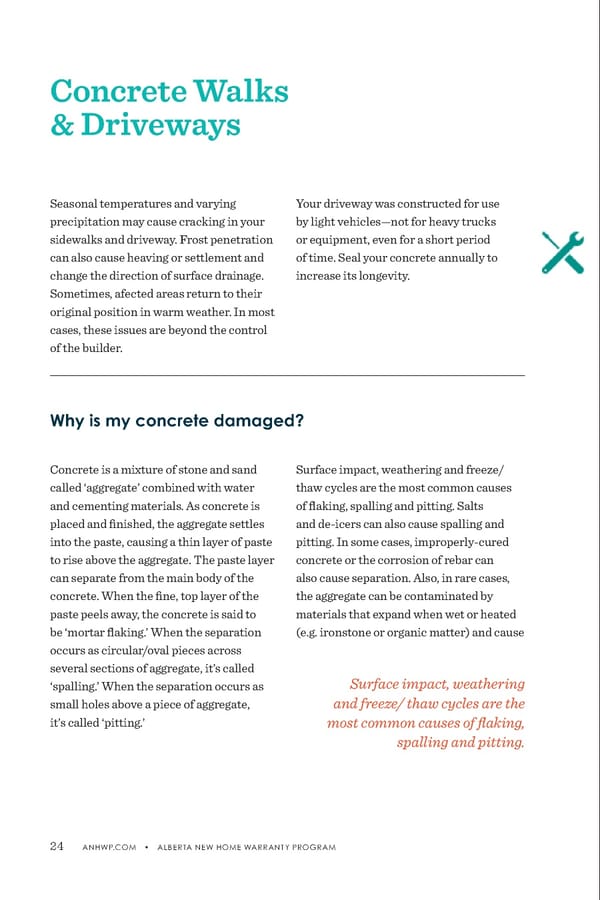Concrete Walks & Driveways Seasonal temperatures and varying precipitation may cause cracking in your sidewalks and driveway. Frost penetration can also cause heaving or settlement and change the direction of surface drainage. Sometimes, afected areas return to their original position in warm weather. In most cases, these issues are beyond the control of the builder. Concrete is a mixture of stone and sand called ‘aggregate’ combined with water and cementing materials. As concrete is placed and finished, the aggregate settles into the paste, causing a thin layer of paste to rise above the aggregate. The paste layer can separate from the main body of the concrete. When the fine, top layer of the paste peels away, the concrete is said to be ‘mortar flaking.’ When the separation occurs as circular/oval pieces across several sections of aggregate, it’s called ‘spalling.’ When the separation occurs as small holes above a piece of aggregate, it’s called ‘pitting.’ Your driveway was constructed for use by light vehicles—not for heavy trucks or equipment, even for a short period of time. Seal your concrete annually to increase its longevity. Why is my concrete damaged? Surface impact, weathering and freeze/ thaw cycles are the most common causes of flaking, spalling and pitting. Salts and de-icers can also cause spalling and pitting. In some cases, improperly-cured concrete or the corrosion of rebar can also cause separation. Also, in rare cases, the aggregate can be contaminated by materials that expand when wet or heated (e.g. ironstone or organic matter) and cause Surface impact, weathering and freeze/ thaw cycles are the most common causes of flaking, spalling and pitting. 24 ANHWP.COM • ALBERTA NEW HOME WARRANTY PROGRAM
 ANHWP Care & Maintenance Guide 2022 Page 25 Page 27
ANHWP Care & Maintenance Guide 2022 Page 25 Page 27